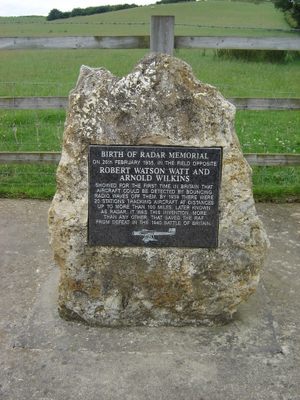About
On February 26, 1935, a converted commercial van filled with top-secret equipment parked next to a field near Daventry in the English midland. The equipment was then connected to a few improvised radio antennas previously erected in the field. High-frequency radio waves were beamed out from the nearby British Broadcast Company to a transmitter in Daventry.
When a Handley Page Heyford biplane bomber approached the site, scientists in the van were able to demonstrate for the first time on British soil that radio waves reflected off flying aircraft. This allowed the scientists to detect the plane using the antennas in the field.
The so-called "Daventry Experiment" convinced Air Marshal Hugh Dowding of the technology's potential. The initial detection range was only eight miles, yet in under five years, the technology had advanced to where radar stations were installed around the coastline. These installations were known as Chain Home and were the world's first working radar system. This initial system had a 100-mile range, capable of observing the build-up of German formations on the other side of the English Channel. This allowed the Royal Air Force to prevail during the Battle of Britain and turn the tide of World War II.
This memorial marks the spot where Arnold Wilkins and Robert Watson Watt parked their van to carry out the experiment. It was unveiled in 2001, and is complete with an information board to the right of plaque that explains the event.
Related Tags
Know Before You Go
Take Northampton Road off the A5 in the direction of Litchborough. The memorial is shortly on the right, next to the public footpath sign. It's possible to park next to the memorial stone, but take care not to block the adjacent farm gate. The field where the antennas were erected is near the rear of the monument and has a public footpath throughout.
Published
February 10, 2020




























